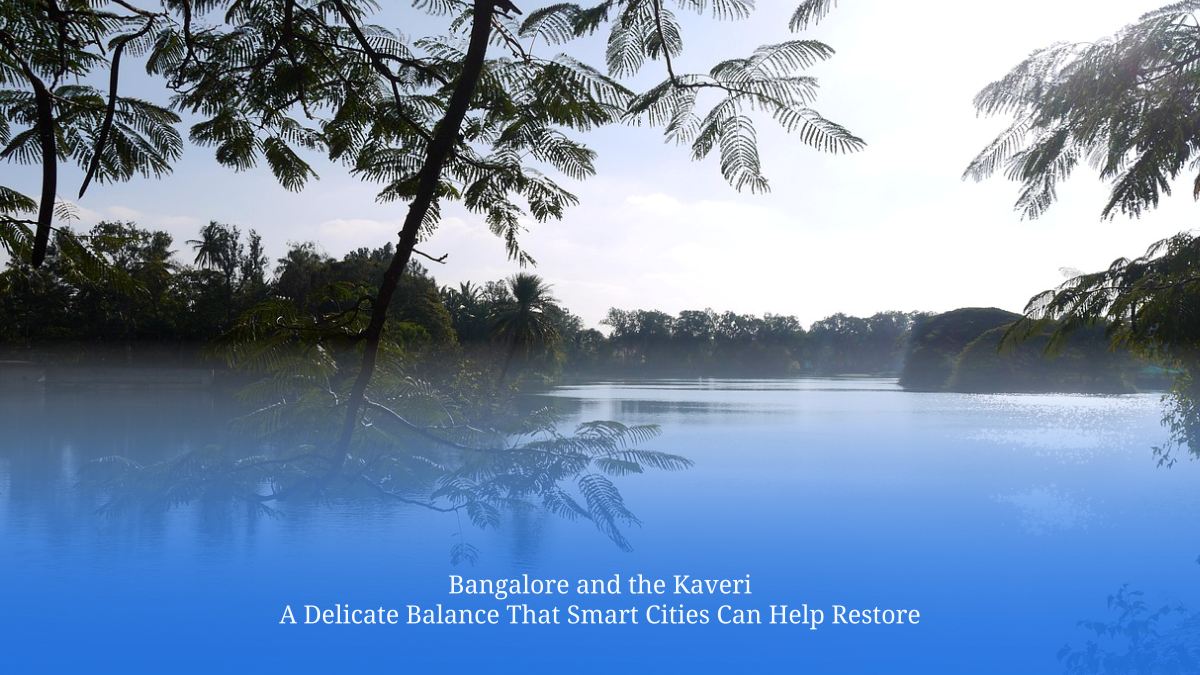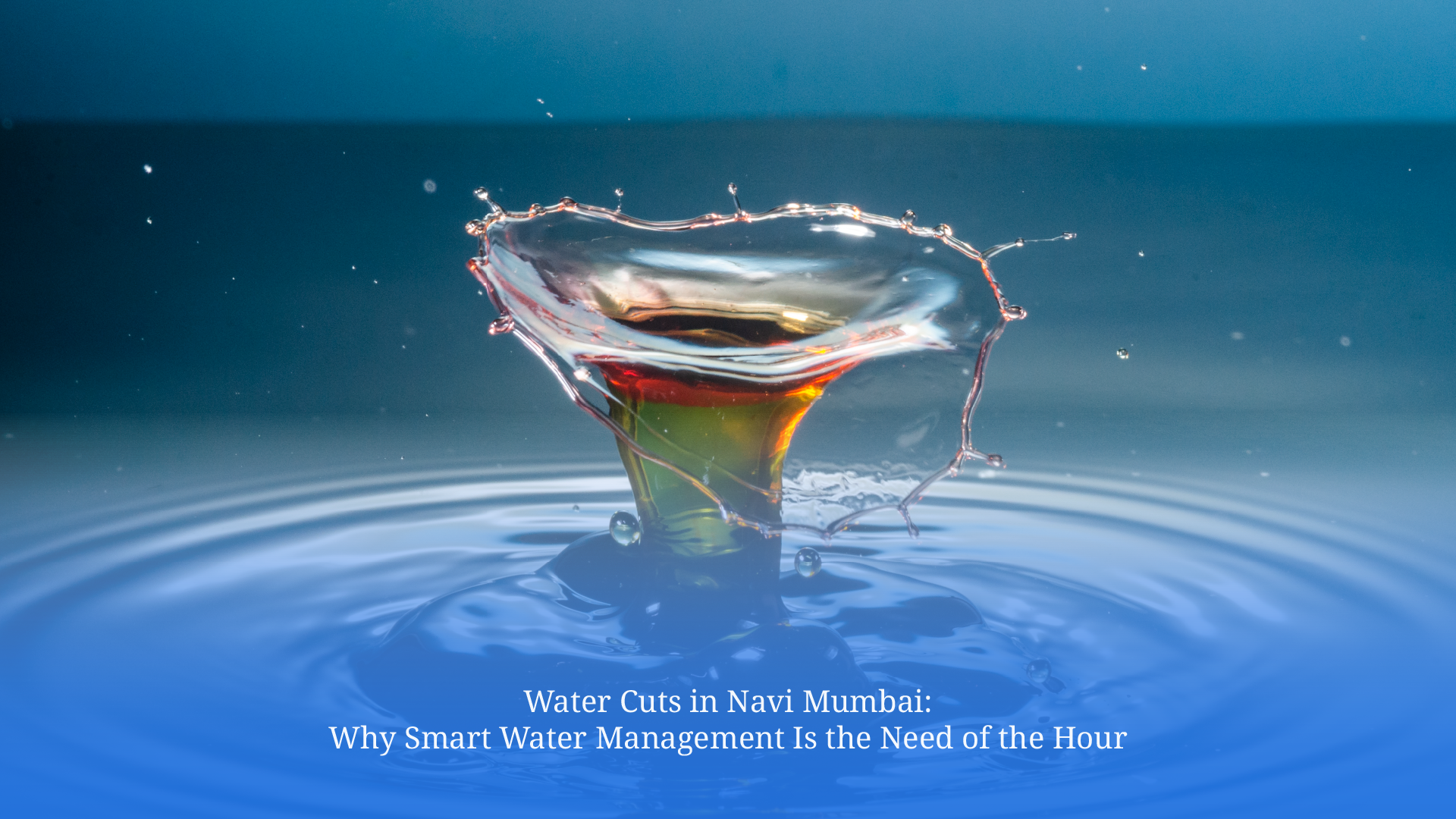Bangalore and the Kaveri: A Delicate Balance That Smart Cities Can Help Restore

Bangalore’s growth has been nothing short of extraordinary. Once known for its greenery and pleasant weather, the city has transformed into India’s tech powerhouse. But with this growth has come a sharp rise in water demand, stretching resources thin and putting added pressure on a river that’s already under strain.
The Kaveri River has long supported life across southern India. Today, it also supports millions of Bangalore residents who rely on it for their daily needs. As the city continues to expand, finding a sustainable way to balance growth with water availability has become urgent. Smart infrastructure and community-driven technology could be part of the solution.
Bangalore’s Dependence on the Kaveri River
The Kaveri isn’t just a distant water source. It supplies nearly half of Bangalore’s water, despite the city being over 100 kilometres away from the river. Pumping this water uphill requires massive infrastructure, significant energy, and high costs.
With the city’s population having more than doubled in just two decades, its reliance on the Kaveri has intensified. At the same time, alternative sources, like groundwater, are being depleted faster than they can be replenished. The gap between demand and sustainable supply is widening, and it’s affecting not just the city but also communities downstream.


Challenges Facing the Kaveri–Bangalore Relationship
The tension between a growing city and a limited resource isn’t accidental. Here’s what’s fuelling the imbalance.
-
Over-Extraction and Stress on the River
Bangalore’s growing needs have led to more water being drawn from the Kaveri basin each year. This doesn’t just impact the city’s supply; it also reduces the flow available to farming communities and ecosystems further downstream. In dry years, the stress becomes even more visible, leading to conflict and environmental damage.
-
Urban Mismanagement
Water scarcity in Bangalore isn’t just about supply; it’s also about how existing resources are used. A significant portion of the city’s treated water is lost due to outdated infrastructure, pipe leaks, and inefficient systems. In many localities, unplanned construction has worsened the problem by cutting off natural recharge points and increasing pressure on borewells. Groundwater levels are dropping, and the city is losing its backup reserves.
-
Climate Variability
Rainfall patterns in and around the Kaveri catchment are no longer predictable. Erratic monsoons, longer dry spells, and higher temperatures have all contributed to reduced natural recharge and higher evaporation. As climate extremes become more frequent, cities like Bangalore face even more uncertainty about their long-term water security.
Challenges Facing the Kaveri–Bangalore Relationship
The tension between a growing city and a limited resource isn’t accidental. Here’s what’s fuelling the imbalance.
-
Over-Extraction and Stress on the River
Bangalore’s growing needs have led to more water being drawn from the Kaveri basin each year. This doesn’t just impact the city’s supply; it also reduces the flow available to farming communities and ecosystems further downstream. In dry years, the stress becomes even more visible, leading to conflict and environmental damage.
-
Urban Mismanagement
Water scarcity in Bangalore isn’t just about supply; it’s also about how existing resources are used. A significant portion of the city’s treated water is lost due to outdated infrastructure, pipe leaks, and inefficient systems. In many localities, unplanned construction has worsened the problem by cutting off natural recharge points and increasing pressure on borewells. Groundwater levels are dropping, and the city is losing its backup reserves.
-
Climate Variability
Rainfall patterns in and around the Kaveri catchment are no longer predictable. Erratic monsoons, longer dry spells, and higher temperatures have all contributed to reduced natural recharge and higher evaporation. As climate extremes become more frequent, cities like Bangalore face even more uncertainty about their long-term water security.
How Smart City Solutions Can Help Restore the Balance
Sustainable water management comes from large-scale infrastructure but also depends on local action and everyday decisions. That’s where smart technology can play a meaningful role.
-
Smart Water Management Systems
Platforms like our Planet SIM are designed to help societies manage their water systems with greater efficiency and control. From monitoring tank levels in real-time to reducing overflow, the platform integrates data and automation into everyday decision-making.
Facilities teams can track how much water each building is using, spot leaks early, and make informed choices about tanker deliveries. With insights on consumption patterns and centralised control, societies can take a more proactive approach, reducing wastage and improving reliability.
In the bigger picture, tools like Planet SIM ease the burden on external sources like the Kaveri by helping communities become more self-aware and self-reliant.
-
Community Engagement and Behavioural Change
Technology works best when residents are part of the journey. Our Planet App connects individuals to their community’s infrastructure in a simple, accessible way. Through the app, residents can stay updated on water availability in their building and get tips on conserving resources.
By helping people understand their own impact and giving them the tools to act, the Planet App encourages more responsible habits at the community level. The shift from passive use to mindful participation can make a big difference in how water is managed across the city.
The Role of Governance and Policy
Smart cities rely on good policy. Government bodies, resident welfare associations, and city planners all play an essential role in scaling solutions like these. By mandating water audits, supporting rainwater harvesting, and investing in digital infrastructure, local governments can encourage more societies to adopt sustainable practices.
What’s equally important is transparency. When residents and authorities have access to accurate data, decisions become easier, faster, and more future-ready. Whether it’s monitoring tanker usage or planning for water scarcity during the summer months, access to the right information makes better management possible.
A Smarter, Sustainable Future for Bangalore
Restoring balance between Bangalore and the Kaveri isn’t easy, but it is possible. Planet Smart City believes that with the right mix of technology, policy, and community involvement, cities can move toward a more sustainable water future. Our smart infrastructure platforms, Planet SIM and Planet App, help societies take control of their resources, reduce wastage, and empower residents. Ready to transform how your community manages water? Reach out to discover how we can support your journey.




